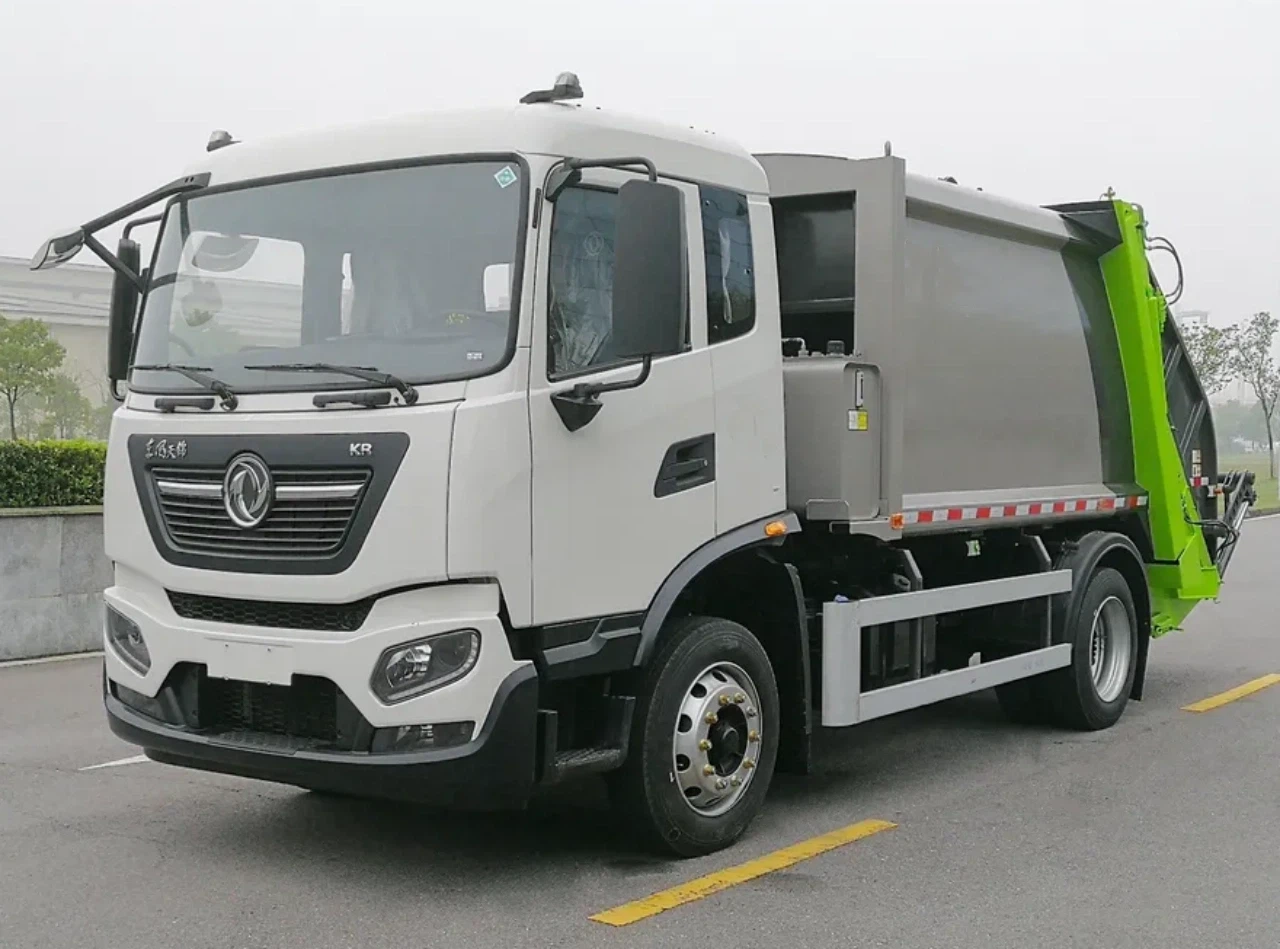Front loader refuse trucks play a vital role in modern waste management, ensuring efficient collection and transportation of refuse materials. This article explores their design, functionality, benefits, and operational considerations, providing readers with an in-depth understanding of these vital vehicles in a waste management system.
What is a Front Loader Refuse Truck?
A front loader refuse truck is a specialized vehicle designed for collecting large volumes of waste from various locations. This type of truck utilizes a front-loading mechanism, which allows it to quickly scoop up refuse containers, such as dumpsters, and transport them to disposal sites. These trucks are commonly seen in urban areas, where waste collection needs to be efficient and timely.
The Anatomy of a Front Loader Refuse Truck
Key Components
Understanding the structural components of a front loader refuse truck is crucial for grasping its operational efficiency. Here we break down its key components:
- Chassis: The truck’s frame, which supports all other components.
- Loader Arm: A hydraulic arm that lifts and tilts waste containers.
- Compaction Mechanism: Compresses waste to maximize capacity.
- Cab: The driver’s area, equipped with controls and safety features.
- Rear Load Area: Where collected refuse is stored until it is disposed of.
Types of Front Loader Refuse Trucks
Front loader refuse trucks are categorized based on their load capacity and design. Here are common types:
| Type | Description | Capacity |
|---|---|---|
| Light Duty | Ideal for residential collection. | Up to 12 cubic yards. |
| Medium Duty | Commonly used for commercial waste pickup. | 12 to 20 cubic yards. |
| Heavy Duty | Designed for large industrial waste. | 20+ cubic yards. |
How Front Loader Refuse Trucks Work
Operational Mechanism
The operational mechanism of front loader refuse trucks involves several steps:
- The truck approaches the waste container to be picked up.
- The loader arm extends to grasp the container.
- The arm lifts and tips the container, emptying its contents into the truck’s load area.
- The arm retracts, and the truck moves to the next location.
Fuel Efficiency and Engine Types
Most front loader refuse trucks utilize diesel engines due to their power and efficiency. Recent advancements have introduced hybrid and electric options, which can enhance fuel efficiency and reduce emissions:
- Diesel Engines: Known for high torque and longevity, they are a standard choice.
- Hybrid Engines: Combine traditional engines with electric systems, improving fuel efficiency.
- Fully Electric: Produce zero emissions, suitable for urban environments with strict regulations.
Benefits of Front Loader Refuse Trucks
Efficiency and Speed
Front loader refuse trucks are designed for rapid waste collection. Their ability to quickly lift and empty containers means fewer trips and less time spent on each collection route.
Enhanced Safety Features
Many modern front loader trucks are equipped with advanced safety features:
- Backup Cameras: Prevent accidents while reversing.
- Stability Controls: Ensure the truck remains stable when lifting heavy loads.
- Visibility Enhancements: Improved headlight and mirror designs for better sightlines.
Environmental Impact
Front loader trucks can help curb environmental pollution through:
- Reduced Emissions: Electric and hybrid models lower greenhouse gas emissions.
- Compaction: Reduces the number of trips needed, minimizing fuel use and road wear.
Challenges and Considerations
Maintenance Requirements
While front loader refuse trucks are robust, they require regular maintenance to ensure optimal performance. Key maintenance tasks include:
- Routine oil changes and fluid checks.
- Regular inspections of hydraulic systems.
- Tire maintenance and rotation.
Training and Staffing
Operating a front loader refuse truck requires skilled drivers. Investing in proper training programs enhances safety and efficiency. Consider the following components:
- Understanding the truck’s operational quirks.
- Safety protocols and emergency procedures.
- Effective routing and route management.
Future Trends in Front Loader Refuse Trucks
Technological Advancements
The refuse trucking industry continuously evolves with technology. Future trends include:
- IoT Integration: Monitoring truck diagnostics to predict maintenance needs.
- Autonomous Driving: Potential for self-driving garbage trucks to increase safety and efficiency.
Green Initiatives
As environmental concerns grow, many municipalities are looking for eco-friendly solutions, which may lead to:
- Increased adoption of electric front loader refuse trucks.
- Incorporation of recycling programs into standard operations.
Practical Tips for Optimizing Front Loader Refuse Truck Operations
Effective Routing
Optimize collection routes to save time and fuel. Consider implementing route management software that analyzes traffic patterns and operational demands.
Regular Maintenance Schedule
Create a comprehensive maintenance schedule to prevent breakdowns and extend vehicle life. Utilize checklists for daily inspections and ensure records are maintained for accountability.
Driver Training Programs
Invest in ongoing driver training to keep skills sharp. Consider including practical exercises, virtual simulations, and safety refreshers to promote confidence and competence.
FAQ Section
1. What is the average cost of a front loader refuse truck?
The cost can range between $200,000 to $400,000 depending on the features and customizations.
2. How long does a front loader refuse truck typically last?
With proper maintenance, a front loader refuse truck can last between 10 to 15 years.
3. What types of waste can front loader refuse trucks collect?
They are designed to collect solid waste, recyclables, and commercial refuse.
4. Are there any regulations specific to operating front loader refuse trucks?
Yes, regulations vary by location and generally cover operational standards, emissions, and safety protocols.
5. How do front loader trucks compare to rear loader trucks?
Front loader trucks are faster for heavy loads and commercial routes, while rear loaders are more suitable for residential areas.
6. What features should I look for when purchasing a front loader refuse truck?
Consider load capacity, safety features, fuel efficiency, and warranty terms to make an informed decision.





